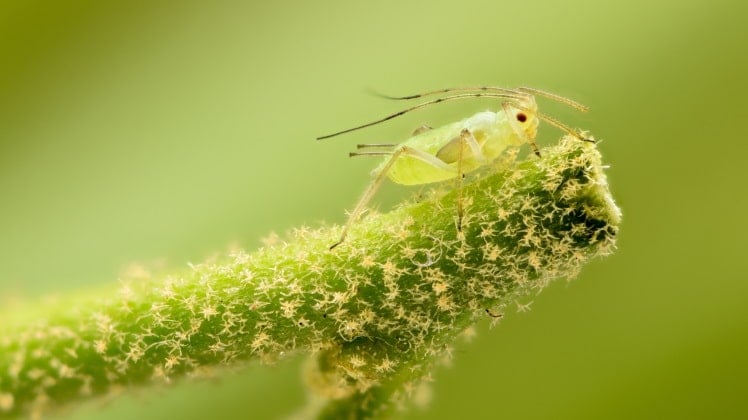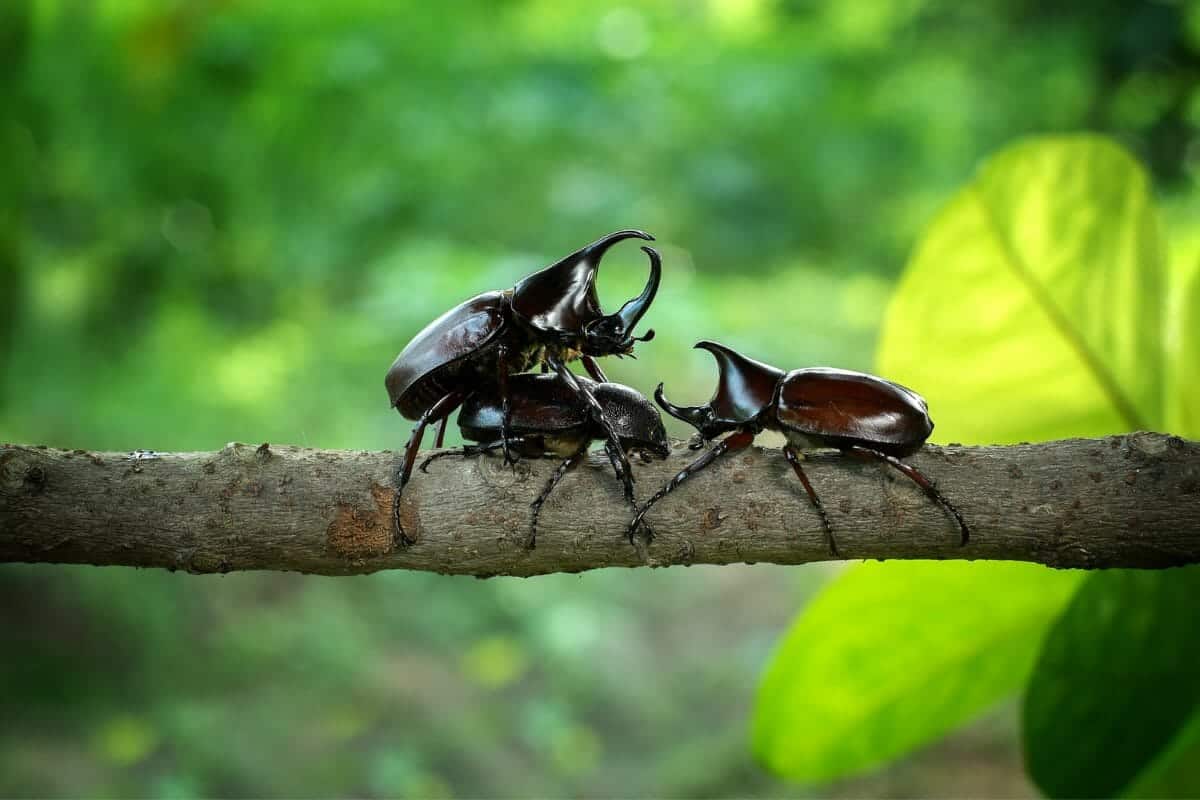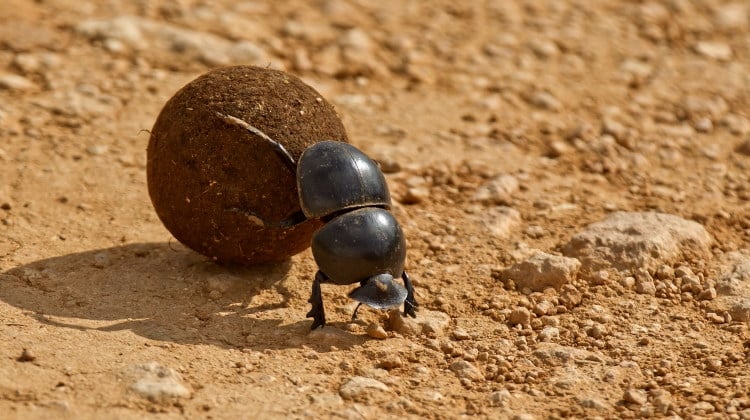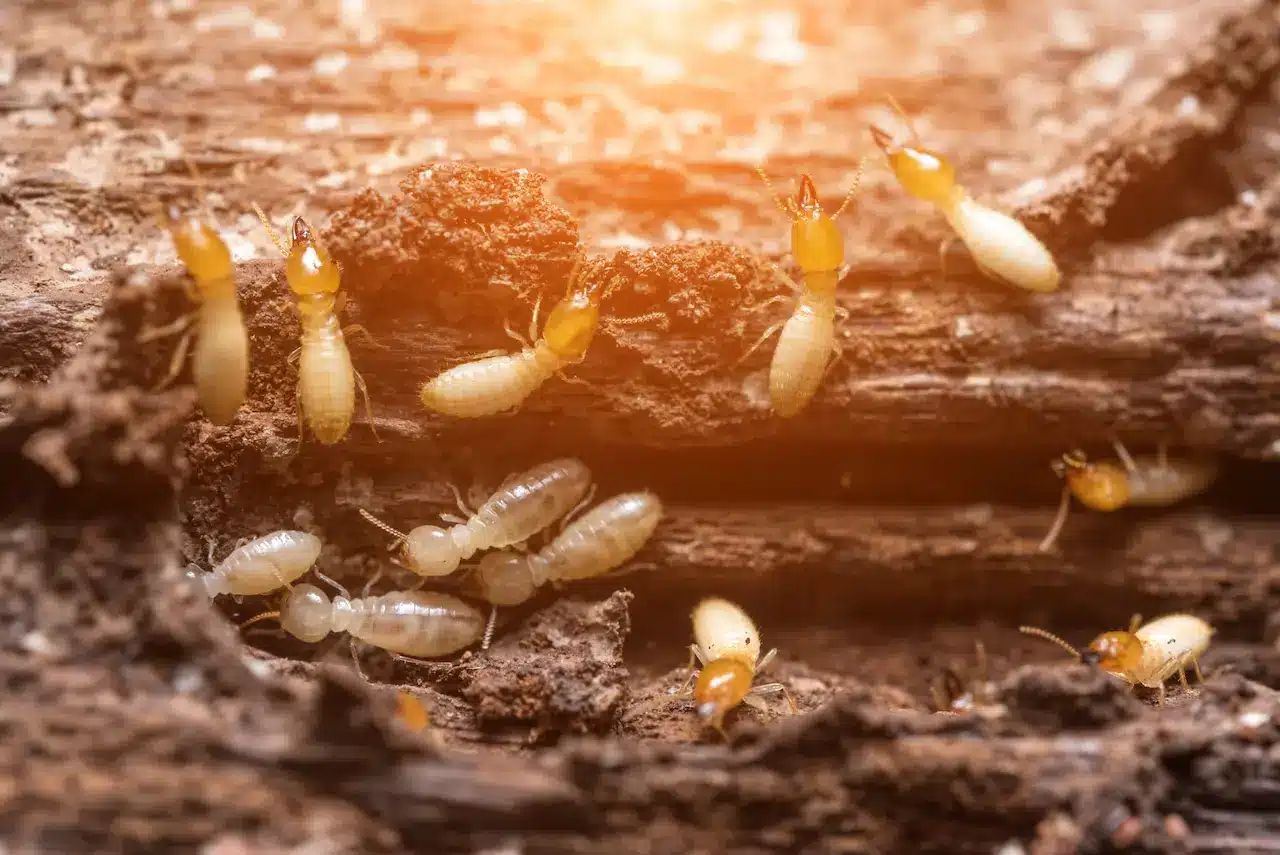Embioptera: The Silk Spinning World Of The Webspinners
The Embioptera (Webspinners) are a small group of soft bodied, relatively small, gregarious insects. They can be found in most tropical and warm temperate climates. There are about 300 species world wide.
They are hemimetabolous (having a simple or very little metamorphosis i.e. no pupa) and the males usually have two pairs of nearly equal wings (though in the Australembiide the males are ‘apterous’ – wingless) while the females are apterous in all species.
Their antennae are filiform (thin and linear) with 15 to 32 segments, their mouthparts designed for biting and their compound eyes are either oval or reniform (kidney shaped) and smaller in the females than the males. They have no ocelli, their cerci are 2 segmented and the males have asymmetrical external genitalia.
Webspinner Ecology
The Embioptera are called Web Spinners because they are very good at spinning webs from the silk secreted by glands in the tarsi of their forelegs.
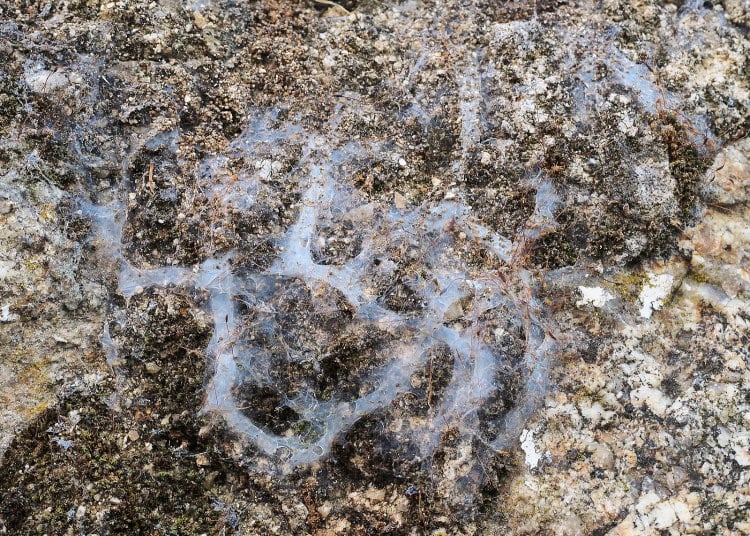
They spin themselves tunnels of silk to live in; a tunnel is normally occupied by a single female and her young. Many tunnels may be congregated together and inter-linked to form a sort of colony, though the Embioptera are not social or even subsocial. Both adults and nymphs can spin the silk to make the tunnels.
They are nocturnal, living in their tunnels by day and coming out at night to feed on plant material of various sorts – dead, living, soft and woody. The males, who probably don’t eat, enter the tunnel of the female only to mate.
Females and juveniles feed on a variety of vegetable materials, bark, dead leaves, moss and also on lichens. Males do not usually live for very long once they reach maturity.
Reproduction is normally bisexual but parthenogenesis does occur (when unfertilised ova (eggs) develop and hatch, this always results in the production of more females only). The female lays the urn-shaped or ovoidal eggs in small clusters along the sides of her tunnel. Females generally exhibit simple parental care, licking the eggs and occasionally moving them. In some species the female supplies the young with chewed plant material. The nymphs go through 4 instars before becoming adult.
Embioptera Taxonomy
The Embioptera can be divided up into three suborders and 13 families. See Tree Of Life.
Bibliography
- The higher classification of the order Embioptera: A cladistic analysis.; Szumik C. A.; Cladistics-The InternationaL Journal of the Willi Hennig Society, 1996, Vol.12, No.1, pp.41-64
- New records of insects in the Canary Islands (Phasmatodea, Lepidoptera, Embioptyera).; Baez M.; BOL. ASOC. ESP. ENTOMOL, 1996 vol. 20 no. 1-2, pp. 252-253
- Communal nesting and subsociality in a webspinner, Anisembia texana (Insecta: Embiidina: Anisembiidae); Choe J.C.; Animal Behaviour. 1994 vol. 47, no. 4, pp. 971-973
- Is group living an antipredator defense in a facultatively communal webspinner (Embiidina: Clothodidae)?; Edgerly J.S.; J. INSECT BEHAV. 1994 vol. 7, no. 2, pp. 135-148
- On the presence of the order Embioptera in Nicaragua.; Szumik C. A.; REV. NICARAG. ENTOMOL.1994 no. 29, pp. 21-23
- Oligembia vetusta, A new fossil Teratembiid (Embioptera) from Dominican amber.; Szumik C. A.; Journal of the New York Entomological Society, 1994, Vol.102, No.1, pp.67-73
- Ovarian structure and oogenesis of the webspinner Oligotoma japonica (Embioptera, Oligotomidae); Niwa, N., Nagashima, T. and Matsuzaki, M.; JAP. J. ENTOMOL.1993 vol. 61, no. 3, pp. 605-612;
- A new species of Strepsiptera from Chile and two new records for the insect fauna of Argentina (Embioptera and Thysanoptera).; De Santis, L. and De Sureda, A.E.G.; REV. CHIL. ENTOMOL. 1993 vol.20, pp. 61-63
- Effect of atypical food on two species of embiids, Pseudembia flava and Oligotoma saundersii (Embiidina: Insecta)
Rita, C. and Ananthasubramanian, K.S.; J. ECOBIOL. 1992 vol. 4, no. 1, pp. 5-10 - Ultrastructure of silk gland of webspinners, Oligotoma japonica (Insecta, Embioptera)l Nagashima, T., Niwa, N., Okajima, S. and Nonaka, T.; CYTOLOGIA. 1991 vol. 56, no. 4, pp. 679-685
- Feeding behaviour in two species of embiids Pseudembia flava Ross and Oligotoma saundersii (Westwood) (Embioptera: Insecta); Rita, C. and Ananthasubramanian, K.S.; HEXAPODA. 1991 vol. 3, no. 1-2, pp. 79-81
- Two new species of Teratembiidae (Embiidina) from Argentina.; Szumik, C.A.; J. N.Y. ENTOMOL. SOC. 1991 vol. 90, no. 4, pp. 611-621
- Damage by Webspinners (Insecta, Embioptera) in Israel; Argaman Q. and Mendel Z.; Tropical Pest Management, 1991, Vol.37, No.1, p.101
- Maternal behaviour of a webspinner (Order Embiidina): Mother-nymph associations.; Edgerly, J.S.; ECOL. ENTOMOL. 1988 vol.13, no. 3, pp. 263-272
- Oligotoma nigra (Hagen) (Embiidina: Oligotomidae), an introduced species new to Arkansas.; Carlton, C.E. and Bassi, D.G.; J. KANS. ENTOMOL. SOC. 1988 vol. 61, no. 3, pp. 352-353
- Embioptera from Mexico. IV. Description of a new species from genus Clothoda Enderlein, 1909.; Marino P., E. and Marquez M., C.; AN. INST. BIOL., UNIV. NAC. AUTON. MEX. (ZOOL.). 1987 vol. 58, no. 1, pp. 63-68
- Colony composition and some costs and benefits of facultatively communal behavior in a Trinidadian webspinner, Clothoda urichi (Embiidina: Clothodidae); Edgerly, J.S.; ANN. ENTOMOL. SOC. AM.; 1987 vol. 80, no. 1, pp. 29-34
- Maternal behaviour of a webspinner (order Embiidina); Edgerly, J.S.; ECOL. ENTOMOL. 1987 vol. 12, no. 1, pp. 1-11
- Ultrastructural investigation of the ommatidia in the dark-adaptive eye of the Turkestan Embiid Embia tartara (Embioptera); Burakova O. V. and Mazokhinporshnyakov G. A.; Zoologichesky Zhurnal, 1986, Vol.65, No.11, pp.1743-1746
- Grooming behavior in Embioptera and Zoraptera (Insecta); Valentine B. D.; Ohio Journal of Science, 1986, Vol.86, No.4, pp.150-152
- A new braconid genus (Hymenoptera) parasitizing webspinners (Embiidina) in Trinidad.; Shaw, S.R.; Edgerly, J.S.; PSYCHE (CAMB., MASS.). 1985 vol. 92, no. 4, pp. 505-512
- A synopsis of the Embiidina of the United States.; Ross, E.S; PROC. ENTOMOL. SOC. WASH. 1984 vol. 86, no. 1, pp. 82-93;
- Introduction to the study of the order Embioptera in Cuba; Alayo D.,P.; Poeyana, 1979 Vol. 192, 1-9;
Image license: Creative Commons
What Next?
Well, perhaps now you’d be interested to learn a little about mayflies.

